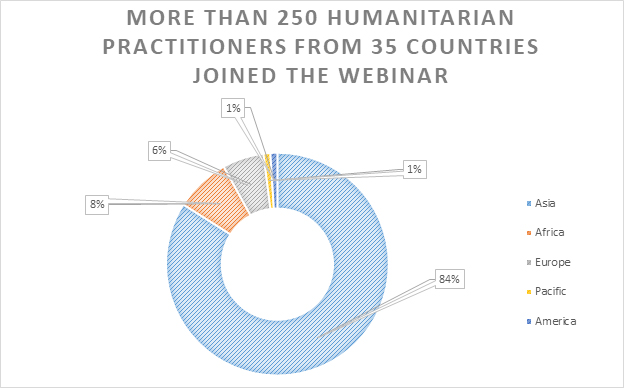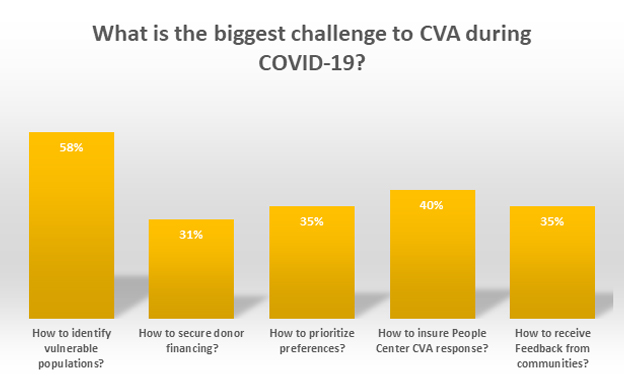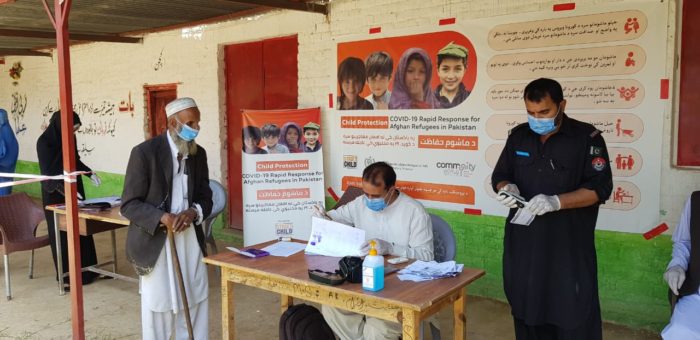Strengthening Cash and Voucher assistance in response to COVID-19
Cash-based aid is known to be one of the most successful strategies that support vulnerable individuals and populations stand on their feet and move on their path towards rehabilitation. Cash and Voucher Assistance (CVA) is therefore largely being applied as a popular modality of responding to different forms of emergencies and is capable of addressing a wide range of needs of affected populations to help them cope with the crises while upholding their dignity.
Community World Service Asia and the Cash Learning Partnership (CaLP) jointly hosted a webinar on Cash and Voucher Assistance in response to COVID-19 on June 17. The webinar aimed to facilitate the wider aid community to enhance their understanding of Cash and Voucher Assistance as a modality response to different types of crises and emergencies, especially focusing on the COVID-19 pandemic.

Jose Jodar, Senior Technical Officer at CaLP, Spain, led the session and was joined by speakers Regina “Nanette” Salvador-Antequisa, Founding Executive Director, Ecosystem Work for Essential Benefits, Inc. (ECOWEB), Chair of A4EP, Philippines and Sudhanshu S. Singh, Founder and CEO Humanitarian Aid Internation (HAI), International Coordinator A4EP, India.
CaLP was introduced as a network launched in 2015, with only five founding members. Today CALP has over 90 members with a presence in various regions such as Africa, Latin America & the Caribbean and the Middle East. It is a global partnership of humanitarian actors engaged in policy, practice and research on CVA.
Cash is an excellent tool to respond to multiple sectors’ needs, insists Jose.
“There are sectoral approaches represented mainly by voucher assistance for specific goods or services. CVA further includes monitoring the outcomes and impact of direct cash among the recipients in various sectors including health, WASH, education, livelihoods and others.”
Cash and Voucher Assistance is pivotal to many humanitarian responses. It does not necessarily need to be used for emergencies alone, but can also be used for preparedness, early recovery and building resilience initiatives.
“More and more cash is being considered between humanitarian assistance and development now,” says Jose.

In a crisis such as the COVID-19 pandemic, aid workers (58% participants) find identifying vulnerable populations as the biggest challenge to plan and implement CVA.
CVA & COVID-19
| How can CVA be used as a modality response to COVID-19 crisis? And why Cash? [1] |
The delivery of cash can effectively meet the needs of the affected populations for better recovery at scale. CVA has been seen as a safer option to provide rapid relief, where conditions allow. COVID-19 has opened doors for coordination at the front lines with various organisations and sectors to execute new delivery mechanisms.
The COVID-19 response, with all the various actors involved and on-going programs in place, paves a pathway towards better coordination in terms of aligning assistance to protection programs with humanitarian CVA. The use of social protection systems to support vulnerable people is becoming increasingly common in developing countries and can provide a channel through which CVA can be delivered in the current pandemic. But increased coordination between humanitarian and development actors in the long term is a prerequisite to ensure its effectiveness.
Jose shared useful resources during the webinar to support organisations with better understanding and preparing for likely impacts of COVID-19 on their work and if CVA could be applied in the contexts that they work. The resources also included detailed guidelines on safely and effectively running CVA projects at each stage of the programme cycle.
| Experience Sharing from the ground: |
“In ECOWEB, we are promoting survivor and a community-led response (SCLR) to crisis approach that considers cash programming as an empowering tool in crisis response,”
says Nanette while sharing best practices during the webinar. She emphasized on how cash enables flexibility and allows aid recipients, as individuals and as collective groups, to address their real time needs with dignity and respect.
Diverse leanings have been observed through ECOWEB’s experience of applying the SCLR approach, using the cash modality in various crisis settings, involving people of different ethnicities, culture and faith. Trust has been identified as an essential element for making cash response a norm in crises response. There is a need for trust in the people’s desire to help themselves, in their capacity to plan, prioritize, design, manage and implement their own response action. Trust is a critical factor in effective localization as well while ensuring transparency and accountability. Instituting multidirectional accountability mechanism is also vital. ECOWEB’s work promotes downward accountability, of aid providers to the aid recipients, and sideward accountability, within the organization management system as local facilitators of aid.
Nanette highlighted the need of flexibility and timeliness in cash aid.
“We need to be quick in response during crisis. In our experience of responding to COVID-19, having our own flexible and limited funding readily available to us, we were able to respond immediately to the most vulnerable groups of people affected by the virus. The limited funds, however, addressed the priority needs of the affected people and it enabled community-based groups to prioritize the real time needs of their members.”
For cash programming to become a real empowering tool through SCLR approach, ECOWEB recognises the need for changing institutional roles, relationships, systems and humanitarian framework to make aid recipients the center of humanitarian response and not the aid itself.
When HAI started Cash and Voucher Assistance (CVA) this year, they were one of the early responders to the COVID-19 pandemic. It was a unique kind of a challenge for them as they were faced with a lockdown situation which restricted their mobility. Sudhanshu expressed,
“This was the first disaster of its kind in which we were unaware of the number of people affected. We were dealing here with the secondary affected population facing the economic disaster due to the closure of all activities and not the individuals physically afflicted with the virus itself.”
With a strong social media presence, HAI publicized its early response and caught the attention of millions of affected people in-country and received support that exceeded their expectations.
“Coming up with an innovative approach, HAI addressed the needs of community members without making a physical presence. When HAI receives a distress call, a team member calls the recipient in response to verify the need. It is difficult to verify the needs. However, incorporating the element of trust, the team would do a quick assessment over phone to identify the person’s eligibility to get food support from the government. We would develop a list of essential food items required by the affected individual and get it approved. Through online payment to the nearest grocery shop located to the recipient’s house, the recipient would then be directed to visit the grocery shop and collect its essential items. We were able to help thousands of affected families in this way.”
This pandemic has not only affected the people who live below poverty but has also affected a large population of middle-class families.
“To ensure providing aid with dignity, our helpline assisted many families who did not have to face us physically. Rather we provided aid through online mechanisms. In some instances, HAI offered cash support to cover house rentals and buy vital food products as family members were laid off and consequently had little means of income to pay household expenditures,” shared Sudhanshu.
| Participants’ Reflections: |
Sixty-two percent of the webinar participants were already engaged in some kind of cash and voucher assistance to COVID-19 affected communities and shared their experiences and learnings so far.
- In the beginning of the pandemic, wider communities were severely affected economically due by the global lockdowns, however, with the gradual lifting of lockdowns, the humanitarian community may find it challenging to convince donors on adopting CVA. To convince the wider funding community on CVA, more emphasis should be laid on designing attractive CVA packages
- Conducting a need assessment for CVA programs at a mass level in this pandemic will be challenging in terms of access to remote regions and time constraints
- Many people have lost their jobs due to COVID-19 which has led to an increased request for CVA. In the case of this pandemic, it is difficult to identify who is most in need and who is not.
- While CVA projects are being proposed, will donors be willing to cover health facility for the staff that are front line workers, as transmission of Covid has no boundaries?
| Useful CVA Learning Resources: |
[1] Participants at the webinar raised these questions.








